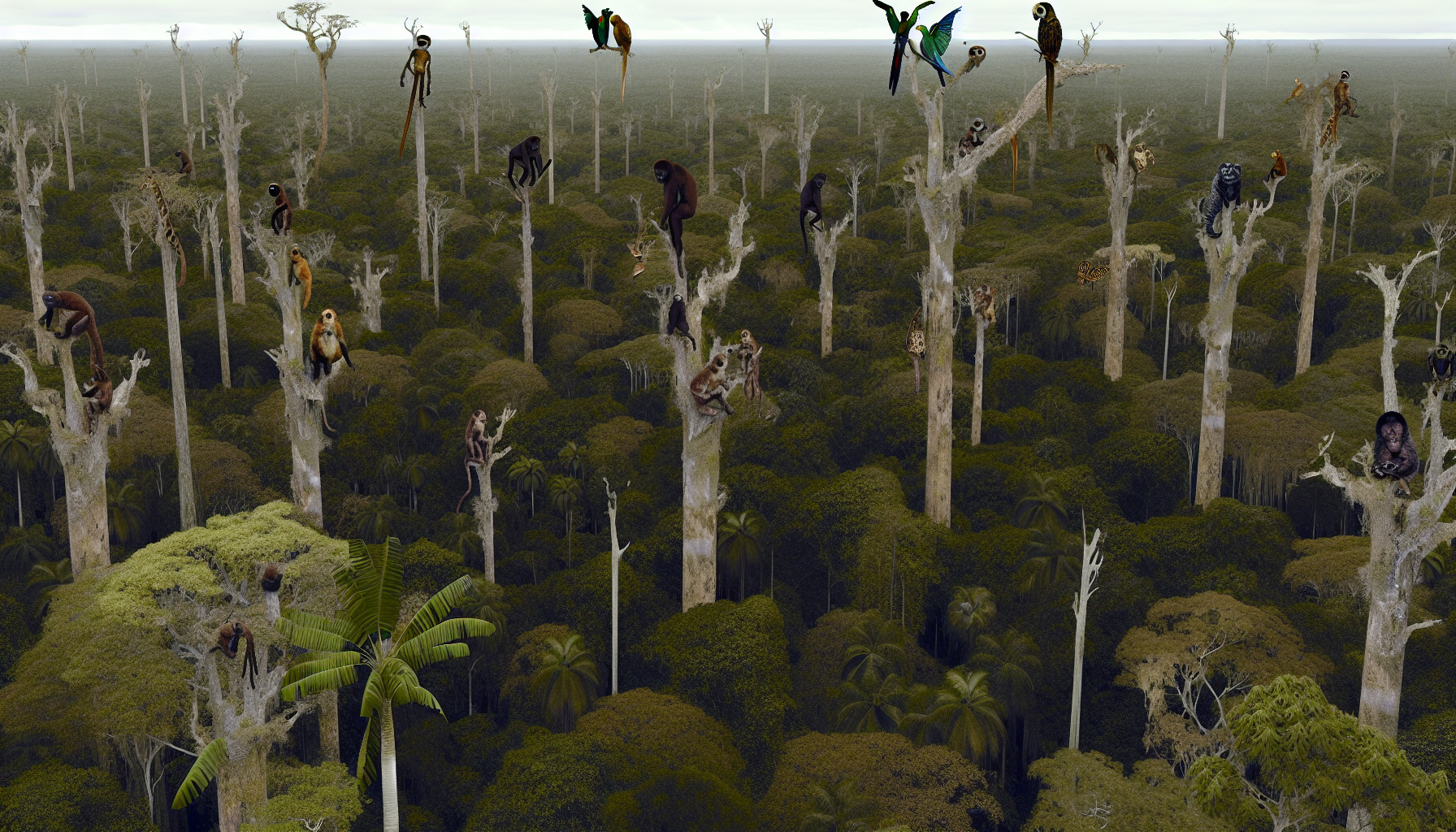In an era where the verdant labyrinths of our once flourishing forests creep into oblivion, we turn our gaze skyward, towards the skeletal remains of what was once the world’s vibrant canopy—a domain teeming with life, now hauntingly silent. This is no fairy-tale forest; it’s the stark reality of our environmental dystopia, where the ghosts of treetop dwellers flit among the memory of leaves.
The Canopy’s Disappearing Act
The fabric of the forest is unraveling; each thread, a species lost, a habitat destroyed. As you walk through the dim underbrush, where light once trickled through a mosaic of green, the ground tells a sordid tale of desolation. The pillars of our ecosystem—the towering giants that once harbored countless lives—stand as forlorn sentinels over barren ground where diversity is now just another word lost in the wind.
Voiceless Victims
Their names read like an elegy for a world we squandered in our quest for conquest. The robust howler monkeys, whose dawn chorus heralded the awakening of the forest; the vibrant birds of paradise, flecks of color against an emerald canvas; the delicate glass frogs, living jewels perched delicately on leaf and limb—all vanished. Not with the drama of extinction, but with the inexorable decline sterilized in numbers, data, and the cold analyses of conservationists sounding the alarm too late.
An Echo of Wings
Where there once was a cacophony of life, there is now but an echo, rebounding off the barren orders of what’s left behind. The silky sifaka, with their bewitching, wide eyes, are reduced to whispers in the wind. The tales of the great canopy dwellers are entombed in the decaying bark, receding further into myth with each passing day.
Reflections in the Mirror of Extinction
No fable presents a lesson so clear, a mirror so harsh, as the one our environment reflects upon us. What was once the heartbeat of the planet—the lush, intricate network of forest canopies that regulated our climate and sustained diverse life forms—is now an erratic throb, a pulse weakening under the strain of human neglect and ecological hubris. And we must ask ourselves, within this graveyard of dreams—what part of us has died alongside the ornate hawk-eagle and the tree-kangaroo? What essence of our humanity corrodes amidst the fallout of the forest?
The fading echo of the treetop denizens begs the question of legacy. Our children will wander beneath these strained skeletons, neverknowing the world of wonder that once soared above them. In the diminishing chorus of wing beats and calls, we find a requiem—a bitter testament to a paradise plundered, a dirge for a future stifled before its breath was fully drawn.
In the quietude, amid the spectral remnants of former grandeur, we trace the lineage of neglect. We may never regain the lush symphony of life that once graced the tree-limbs. The realization dawns, heavy as the unbroken silence—this is our legacy: a testament to what happens when humanity’s touch becomes a scar.
